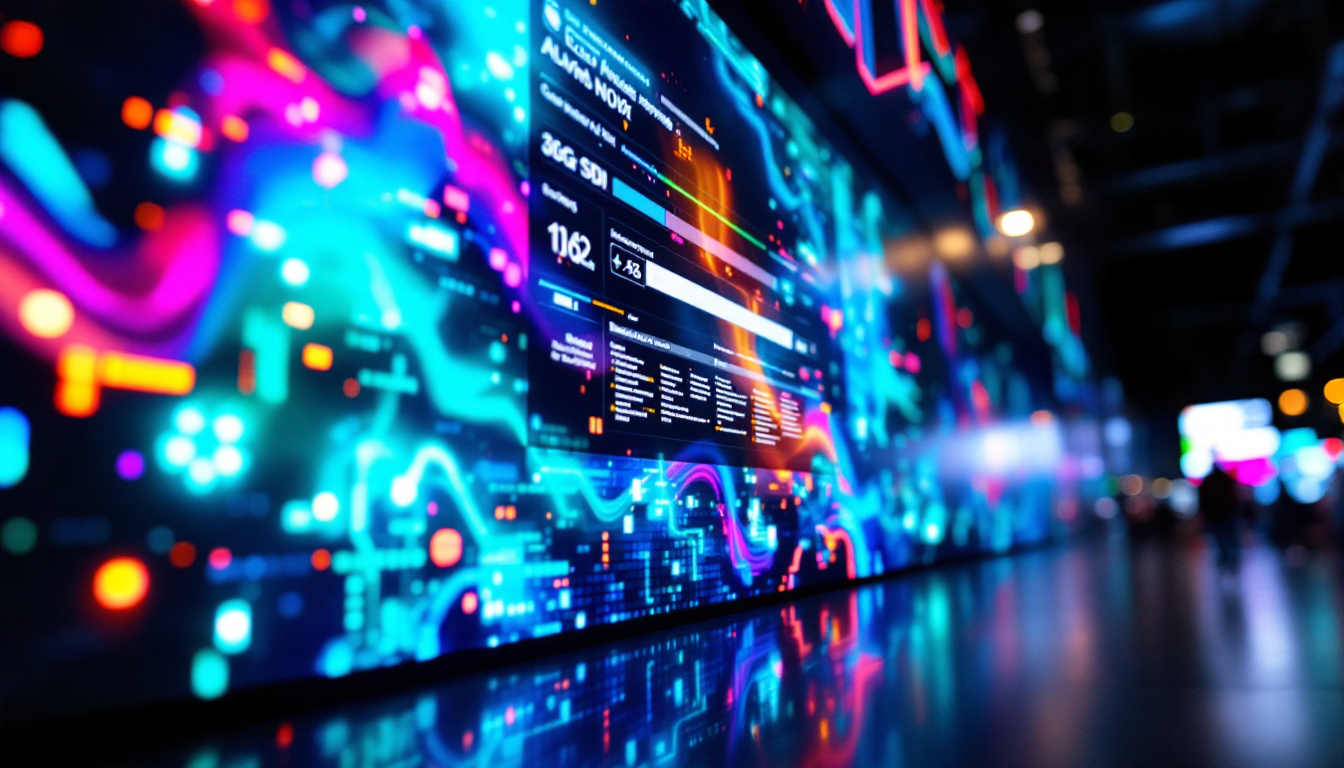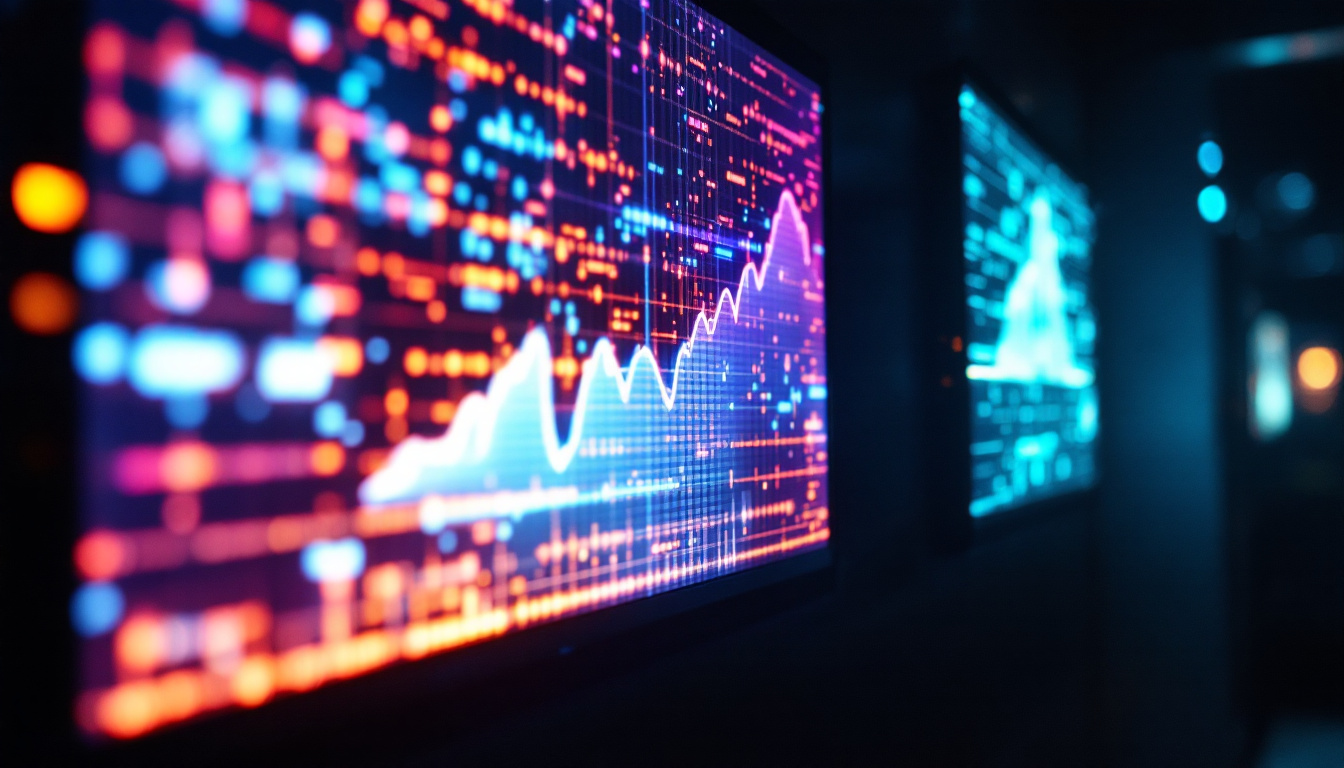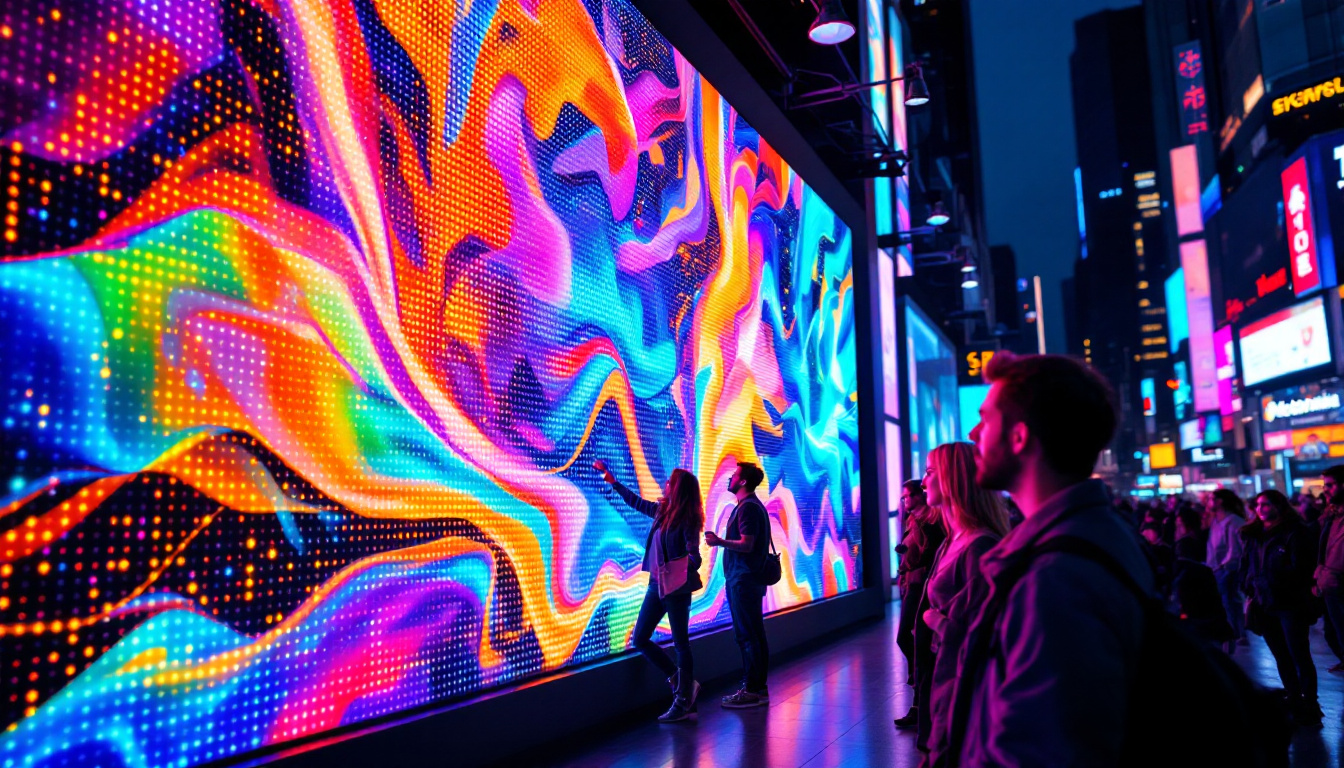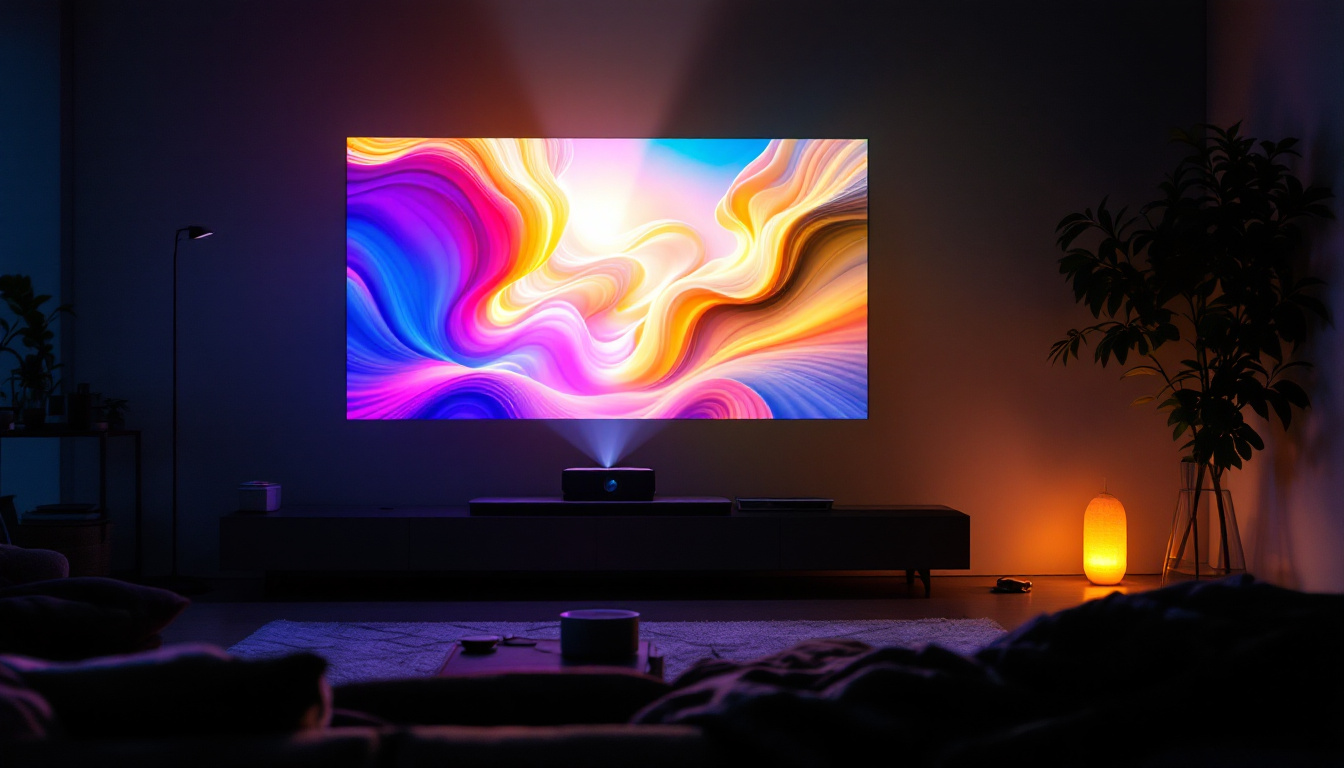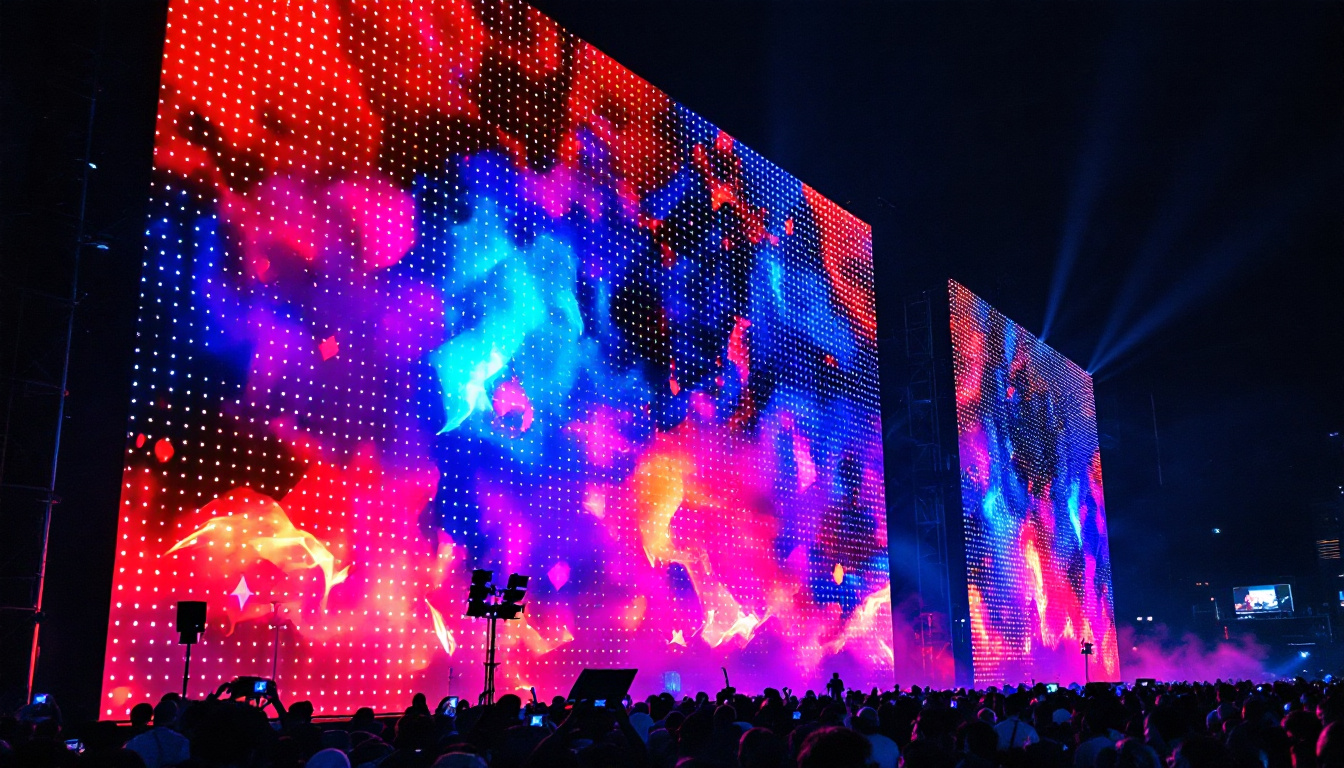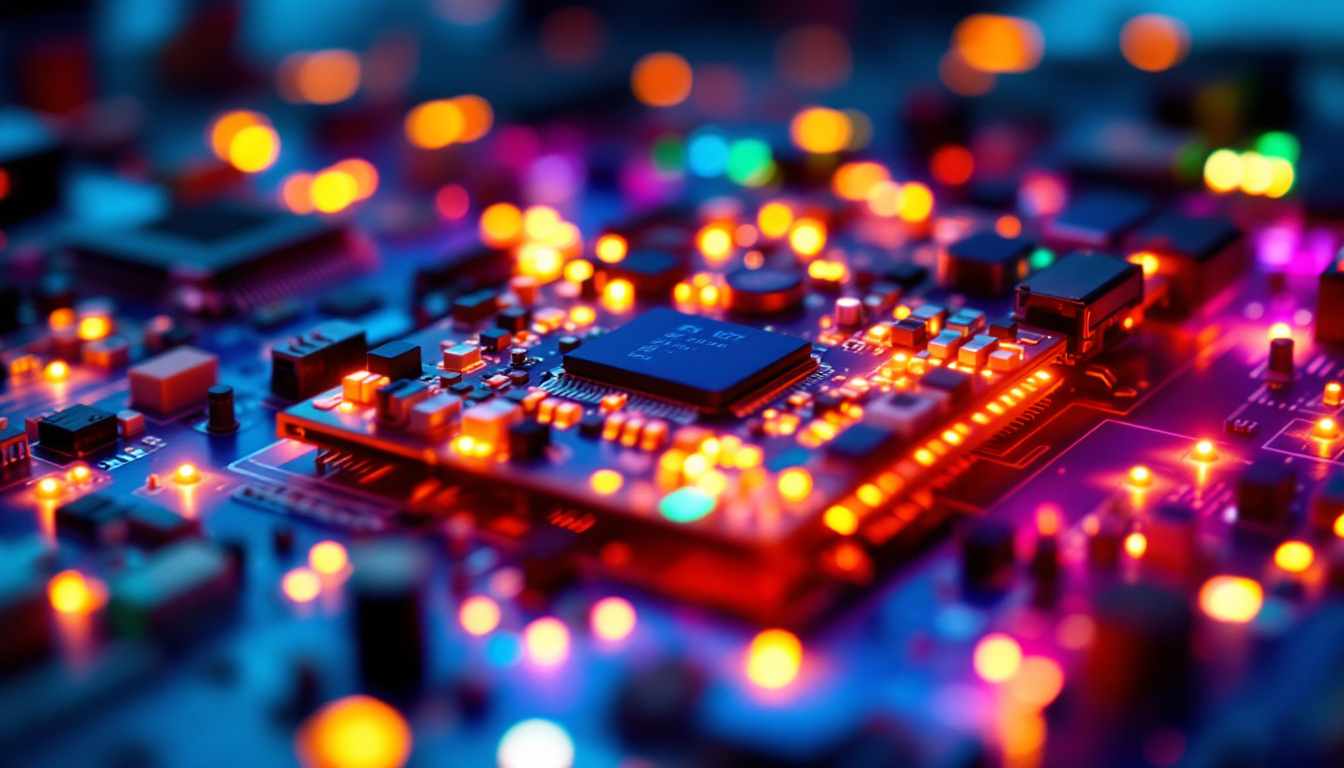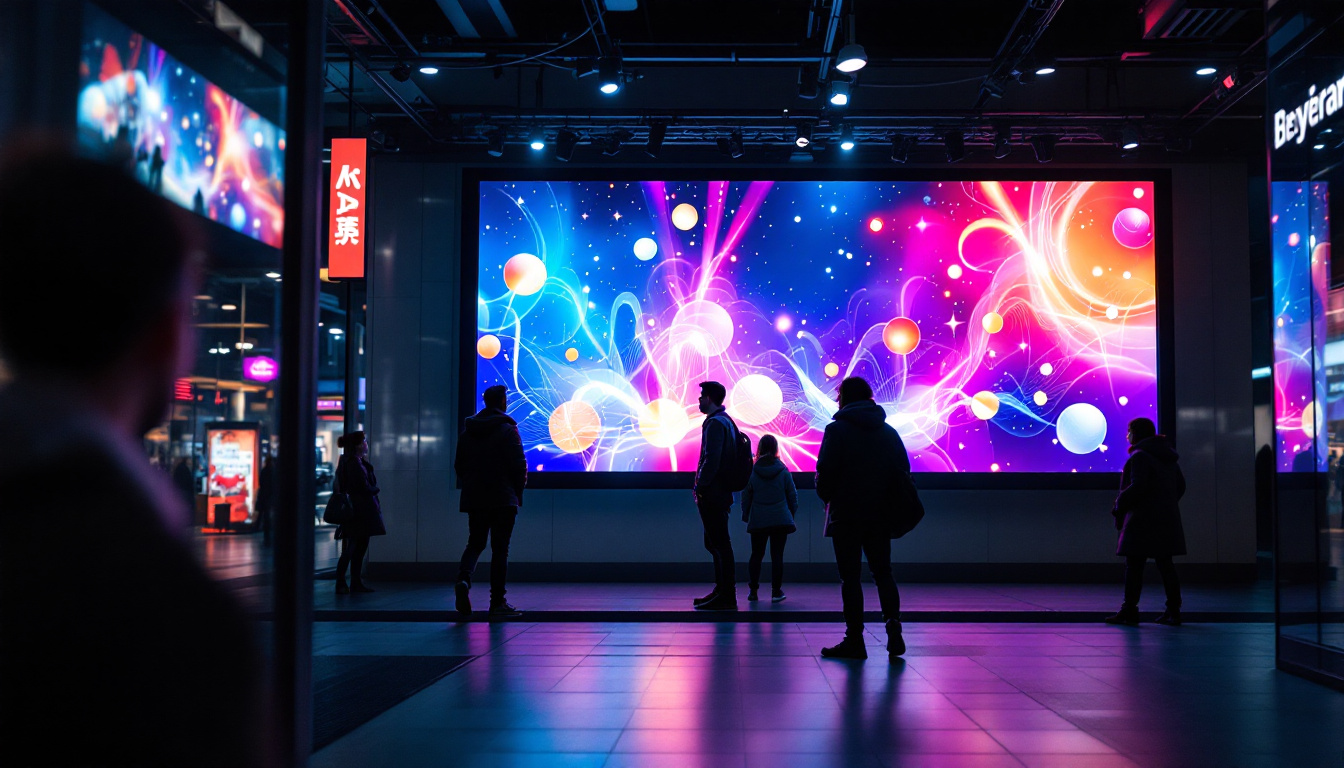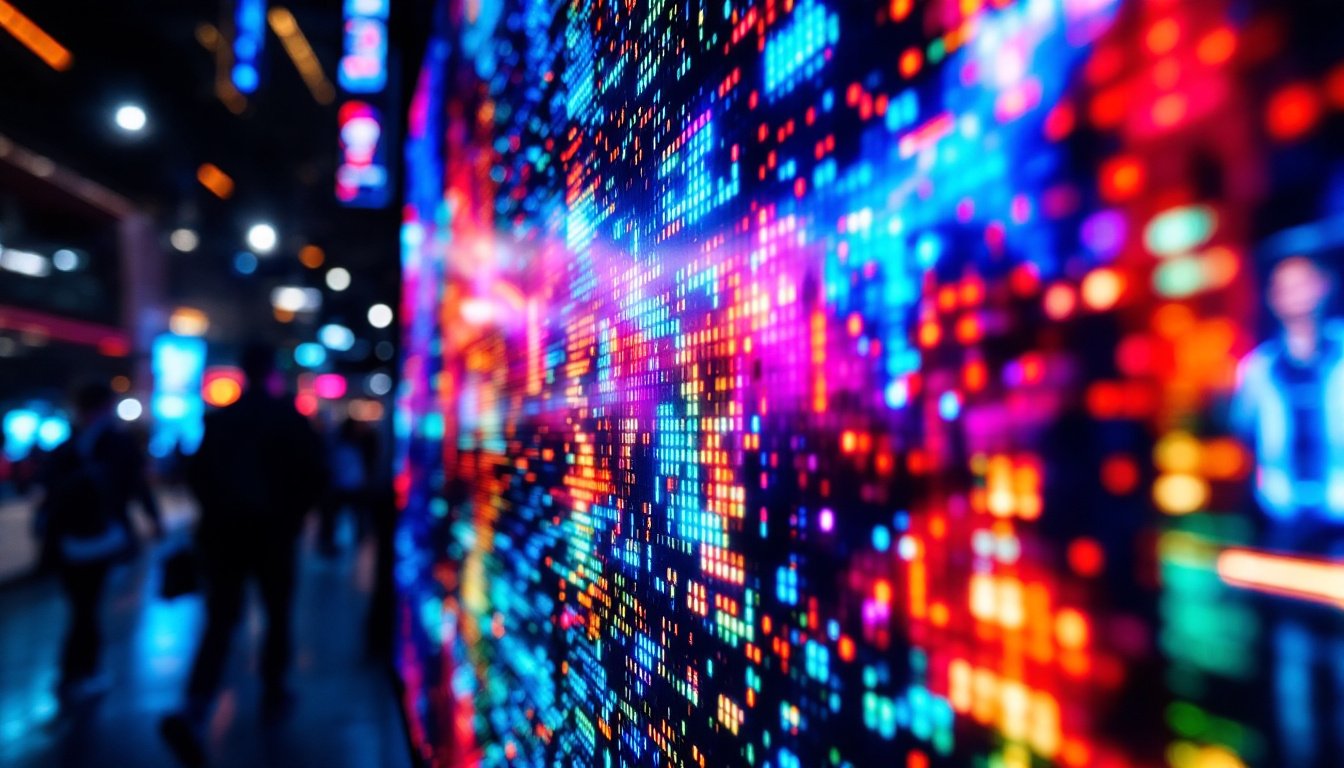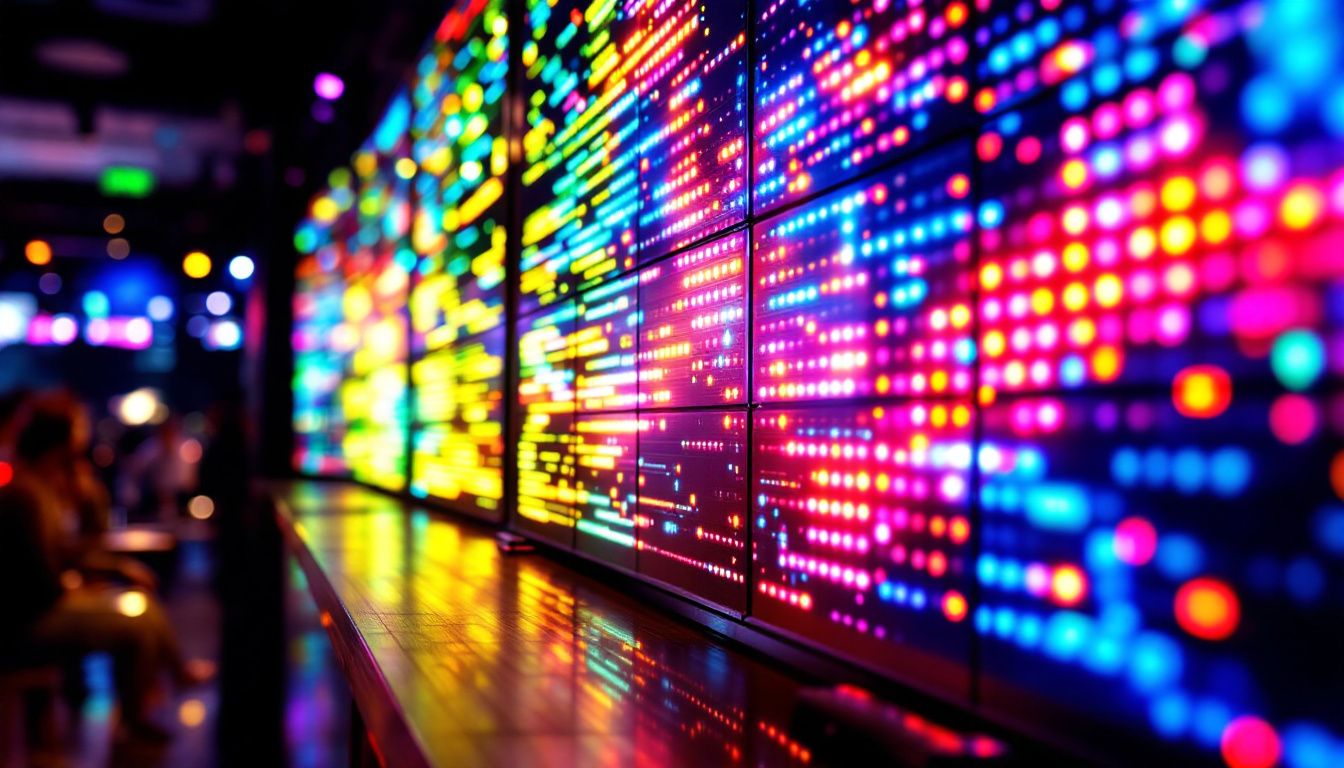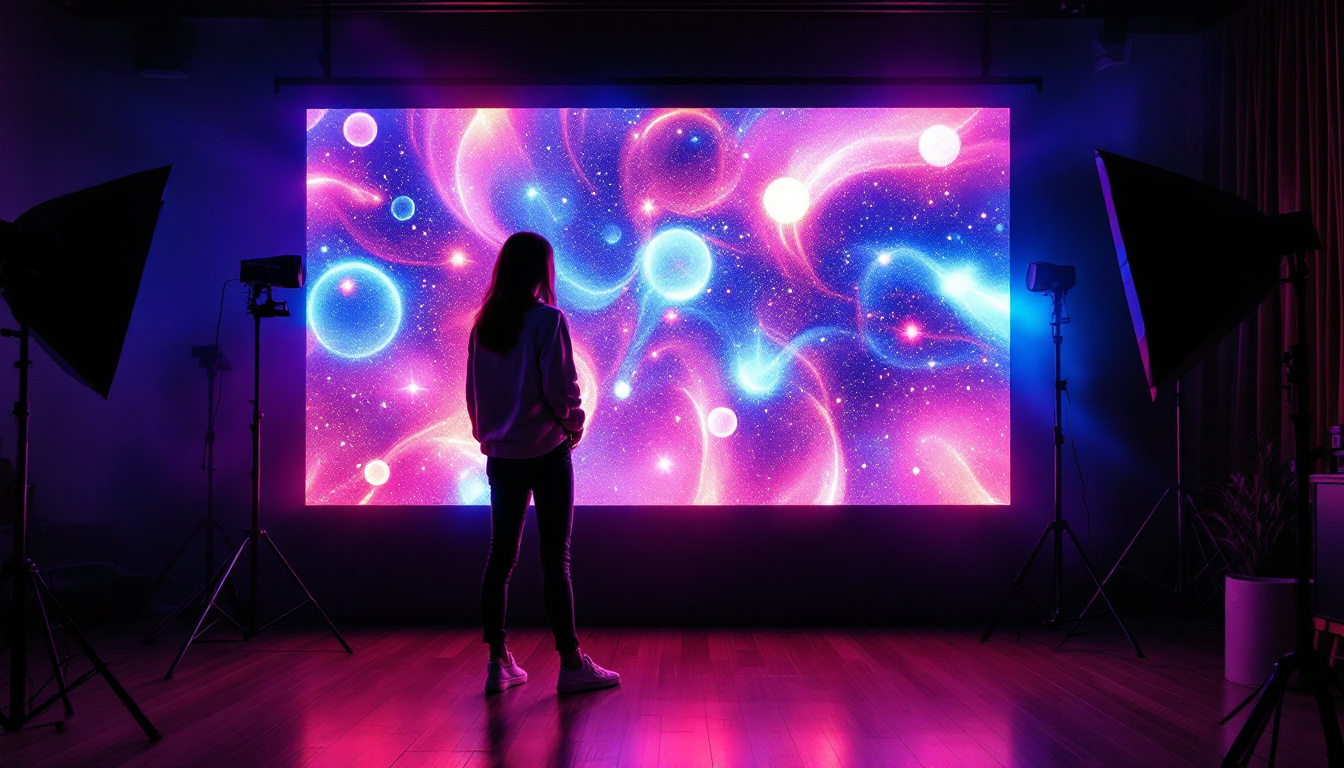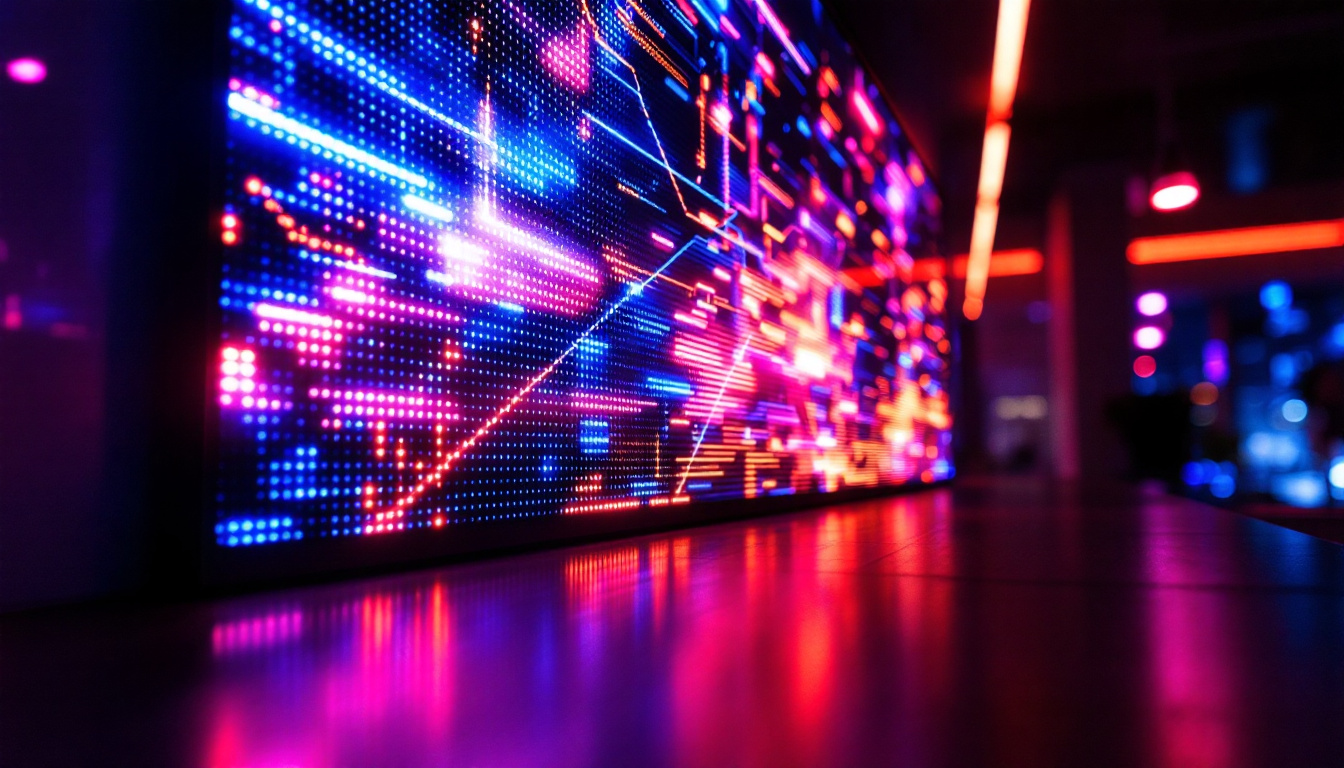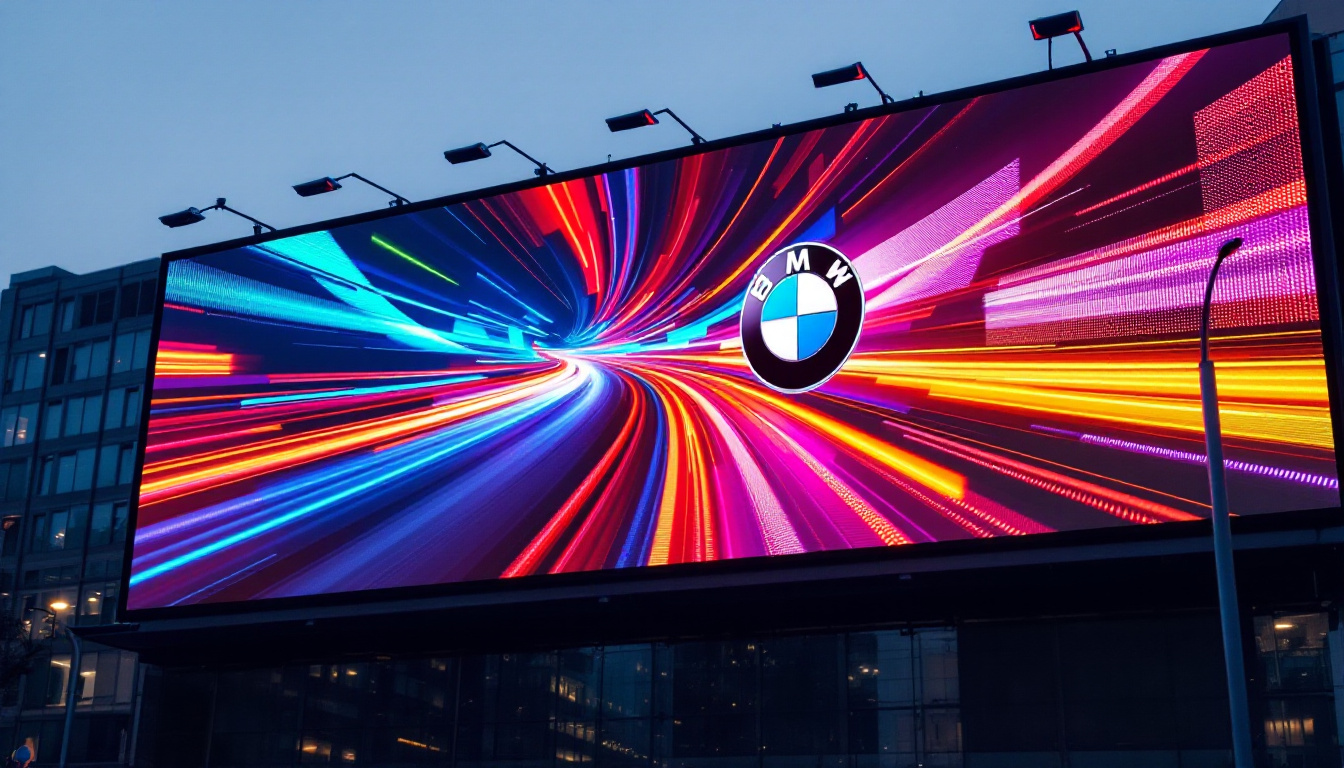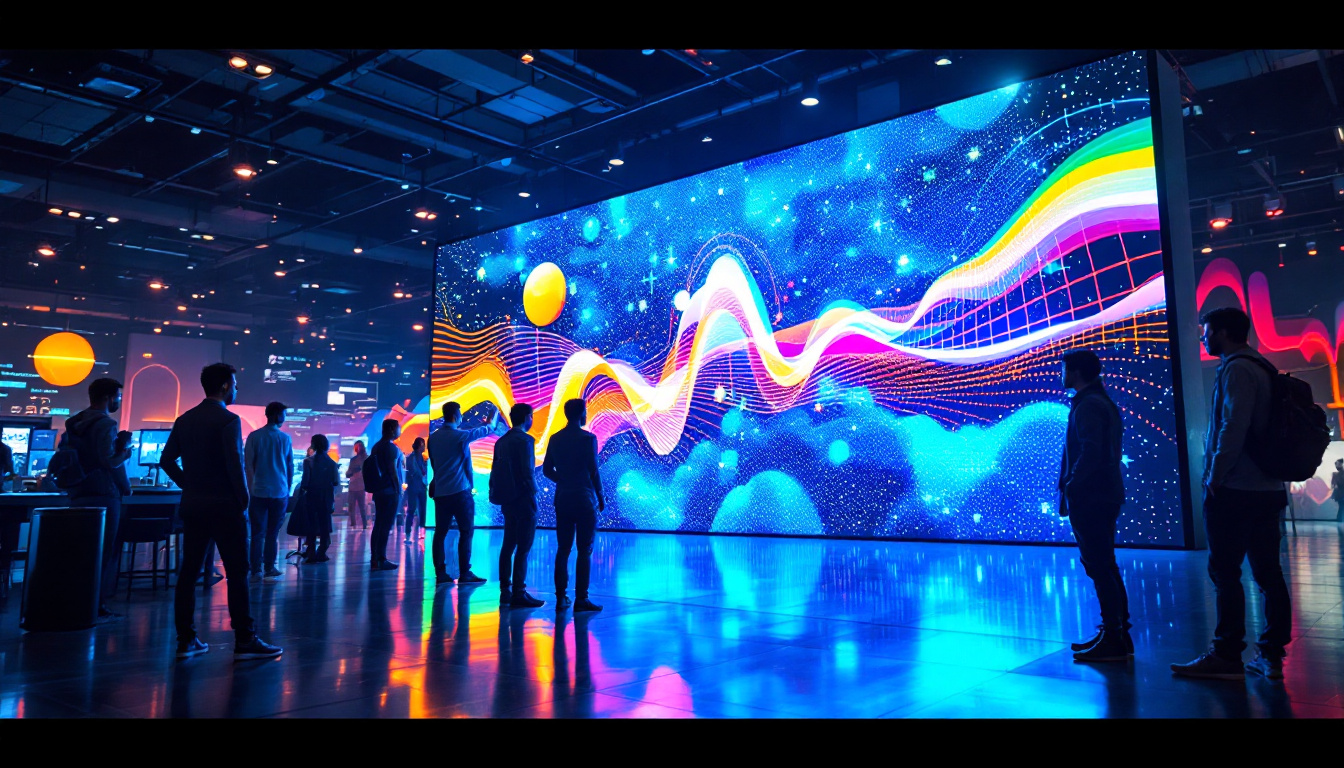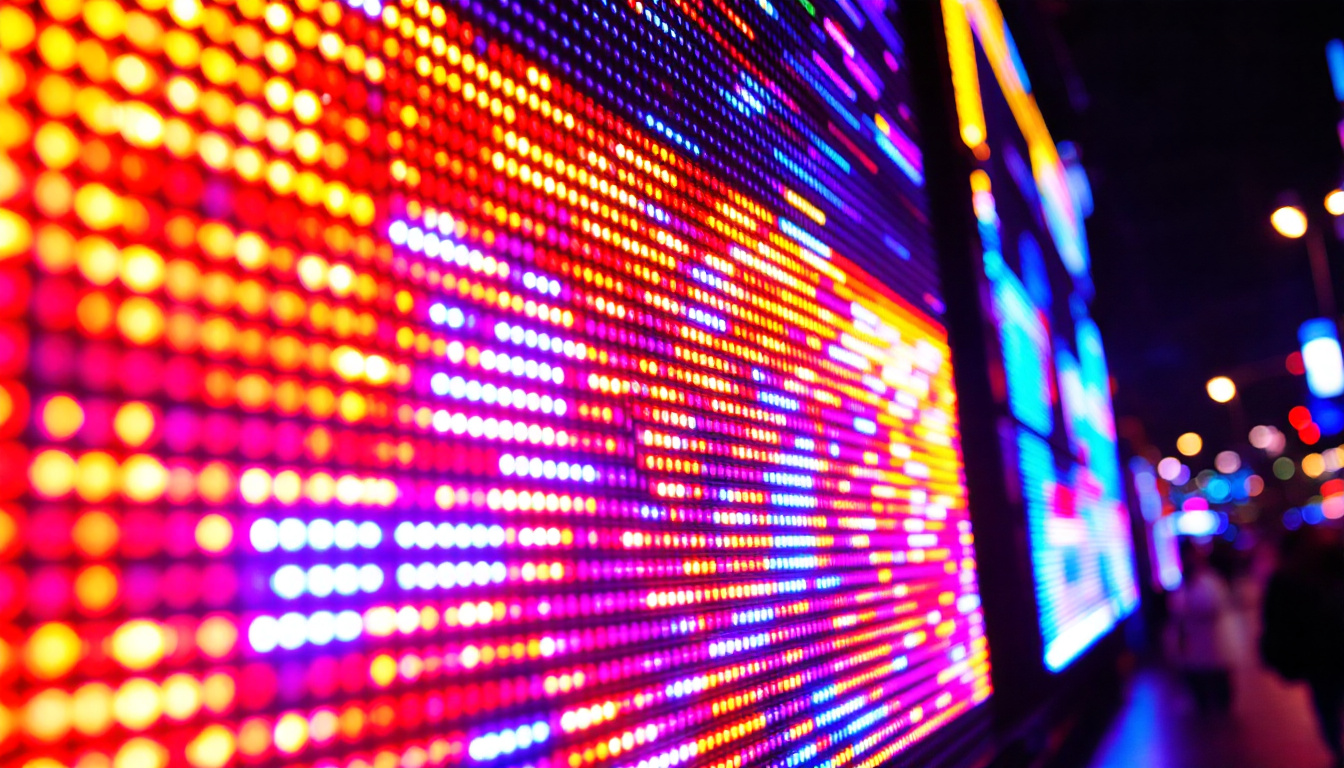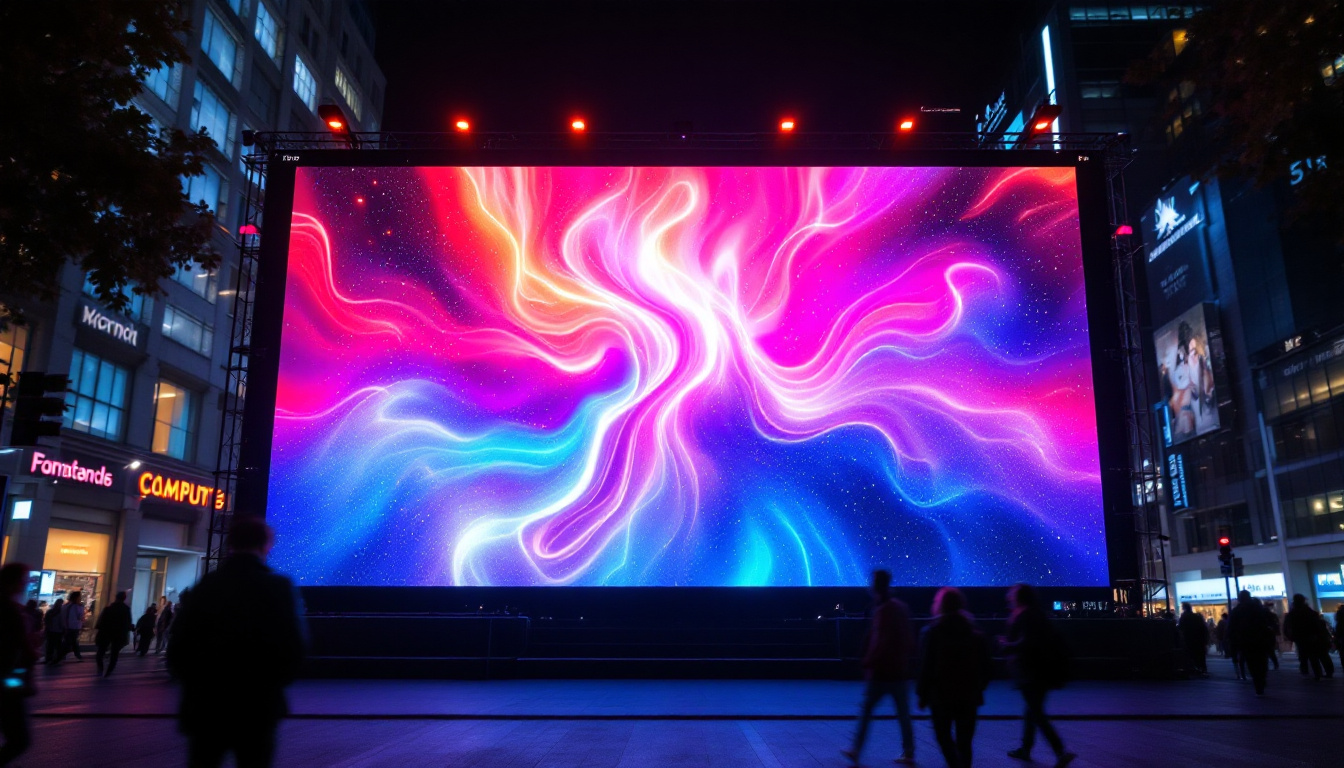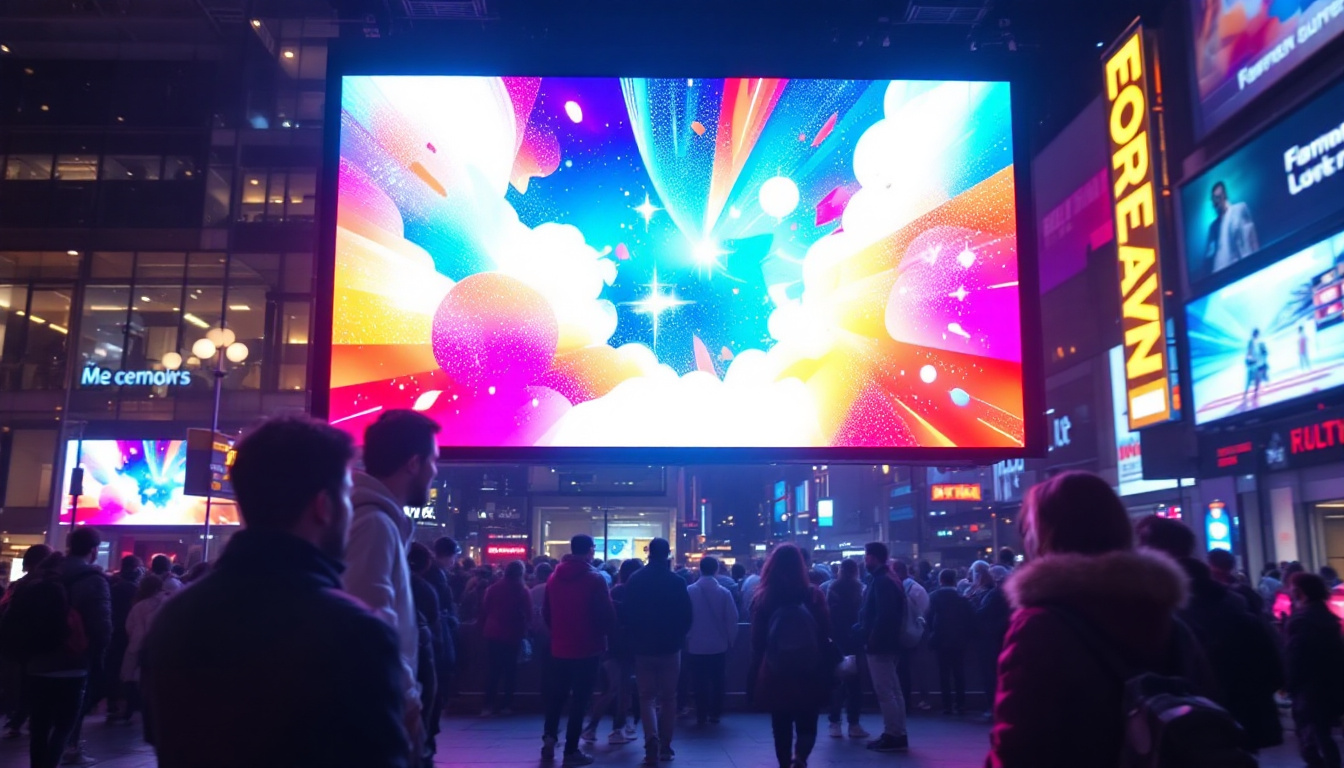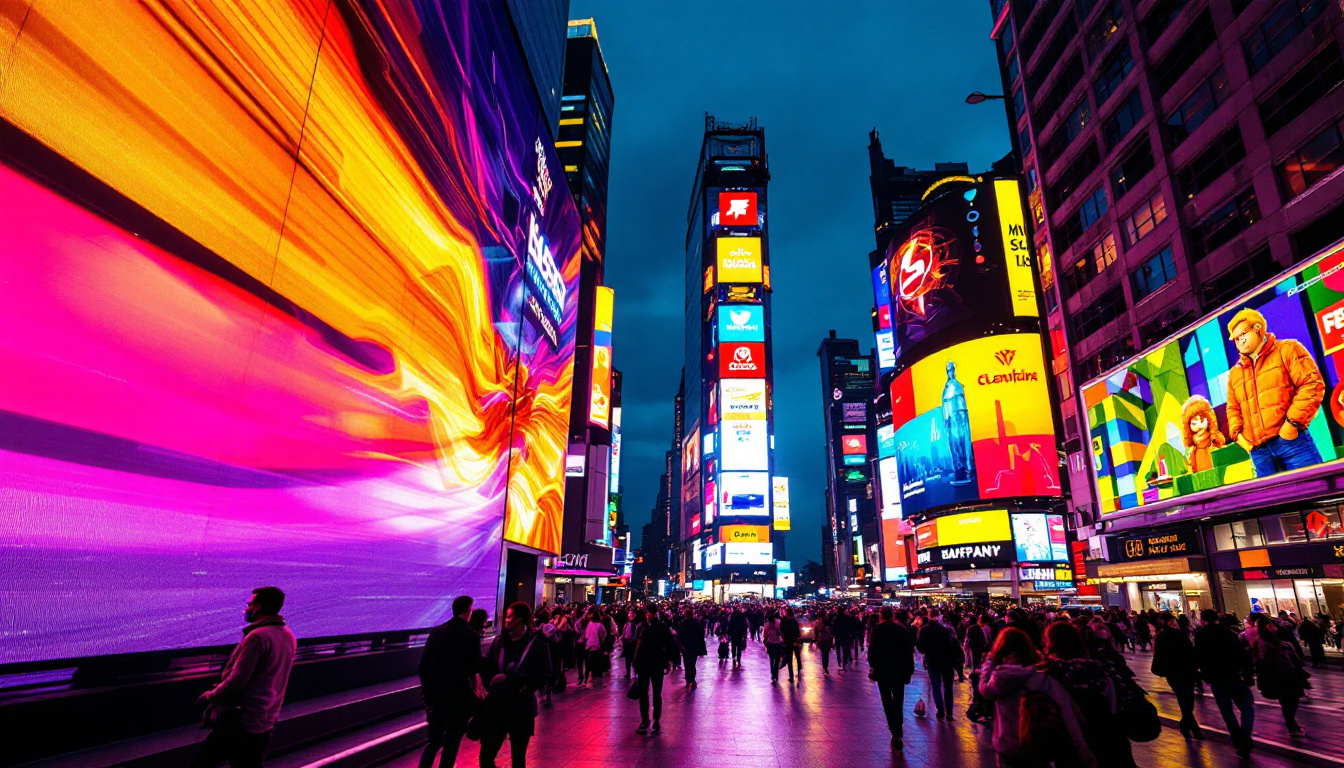Wall Of LCD: LED Display Explained
In the realm of modern technology, the advent of LED displays has revolutionized the way we experience visual content. From advertising billboards to large-scale event screens, LED technology has become ubiquitous. This article delves into the intricacies of LED displays, exploring their construction, functionality, and applications, while also comparing them to traditional LCD displays.
Understanding LED Technology
Light Emitting Diodes (LEDs) are semiconductor devices that emit light when an electric current passes through them. This technology has advanced significantly, leading to the development of LED displays that are not only energy-efficient but also capable of producing vibrant colors and sharp images. The versatility of LED technology has made it a popular choice across various industries, from advertising to entertainment, and even in everyday household lighting solutions.
The Basics of LED Displays
LED displays are made up of numerous small LEDs arranged in a grid. Each LED can be individually controlled to create images and videos. These displays can be categorized into two main types: direct view and backlit. In direct view LED displays, the light is emitted directly from the LEDs, while backlit displays utilize LEDs to illuminate an LCD panel. The choice between these two types often depends on the specific application; for instance, direct view displays are favored for large outdoor billboards, while backlit displays are commonly used in televisions and computer monitors.
One of the most significant advantages of LED technology is its brightness. LED displays can achieve high levels of brightness, making them suitable for outdoor use where sunlight can wash out other types of displays. Additionally, their energy efficiency translates to lower operational costs, a crucial factor for businesses and event organizers. Furthermore, LED technology is known for its long lifespan, often exceeding 50,000 hours, which reduces the frequency of replacements and maintenance, thereby enhancing overall cost-effectiveness.
How LED Displays Work
At the core of LED display technology is the concept of pixelation. Each pixel on an LED screen is composed of red, green, and blue (RGB) sub-pixels. By adjusting the intensity of each sub-pixel, a wide range of colors can be produced. This RGB model allows for the creation of detailed images and videos, as the human eye perceives colors based on the combination of these three primary colors. The precision with which these colors can be mixed is what enables LED displays to render high-definition content with remarkable clarity.
LED displays also utilize a technology known as pulse-width modulation (PWM) to control brightness levels. By rapidly turning the LEDs on and off, PWM can create the illusion of varying brightness levels without changing the color output. This technique is essential for maintaining image quality, especially in dynamic content. Additionally, advancements in LED technology have led to improved color accuracy and wider viewing angles, making it easier for viewers to enjoy consistent image quality from various positions. As a result, LED displays are increasingly being integrated into environments such as stadiums, concert venues, and retail spaces, where visual impact is paramount.
Comparing LED Displays to LCD Displays
While both LED and LCD displays are widely used in various applications, they have distinct differences that can influence their suitability for specific tasks. Understanding these differences can help consumers and businesses make informed decisions when selecting display technology.
Brightness and Color Quality
One of the most notable differences between LED and LCD displays is brightness. LED displays can achieve higher brightness levels, making them ideal for environments with high ambient light. In contrast, traditional LCD displays often struggle in bright settings, leading to washed-out images.
Color quality is another area where LED displays excel. The ability to produce deeper blacks and a wider color gamut gives LED displays an edge in terms of visual appeal. This is particularly important for applications such as digital signage, where vibrant colors can attract attention and convey messages more effectively. Furthermore, the enhanced color accuracy of LED displays makes them a preferred choice for professional environments such as graphic design and video editing, where precise color reproduction is crucial.
Energy Efficiency and Lifespan
Energy efficiency is a critical consideration for many users. LED displays consume less power compared to traditional LCDs, which can lead to significant cost savings over time. Additionally, the lifespan of LED displays is generally longer, with many models rated for over 50,000 hours of use. This longevity makes them a more sustainable option for businesses looking to reduce their environmental impact.
Moreover, the reduced energy consumption of LED technology not only translates to lower electricity bills but also contributes to a smaller carbon footprint. As organizations increasingly prioritize sustainability, the choice of display technology can play a pivotal role in their overall environmental strategy. It’s worth noting that advancements in LED technology, such as organic LEDs (OLEDs), are further pushing the boundaries of efficiency and performance, making them even more appealing for future applications.
Applications of LED Displays
LED displays have found their way into a myriad of applications across various industries. Their versatility and adaptability make them suitable for both indoor and outdoor environments.
Advertising and Marketing
One of the most prominent uses of LED displays is in advertising. Digital billboards and signage leverage the brightness and color quality of LED technology to capture the attention of passersby. These displays can be easily updated with new content, allowing businesses to promote sales, events, or brand messages in real-time.
Moreover, the ability to create dynamic content, such as animations and videos, enhances the effectiveness of advertising campaigns. Brands can engage their audience more deeply, leading to higher conversion rates and improved brand recognition. Additionally, the strategic placement of LED displays in high-traffic areas maximizes visibility, making them an essential tool for businesses looking to stand out in a crowded marketplace. The interactive nature of some LED displays also allows for customer engagement through touch screens or QR codes, further bridging the gap between digital and physical marketing.
Events and Entertainment
In the entertainment industry, LED displays play a crucial role in enhancing the viewer experience. Concerts, festivals, and sporting events often utilize large LED screens to broadcast live feeds, visuals, and graphics. These displays create an immersive atmosphere, ensuring that audiences can enjoy the event regardless of their seating position.
Furthermore, LED technology has also made its way into theatrical productions, where it is used for backdrops and stage effects. The flexibility of LED displays allows for quick changes in scenery, enabling more dynamic storytelling. In addition to enhancing visual appeal, LED displays can also be synchronized with sound systems to create a cohesive audio-visual experience. This synchronization can elevate performances to new heights, captivating audiences and leaving a lasting impression. As technology evolves, we are likely to see even more innovative uses of LED displays in live performances, including augmented reality elements that blend seamlessly with the physical stage, further blurring the lines between reality and digital artistry.
Future Trends in LED Display Technology
The future of LED display technology looks promising, with ongoing advancements paving the way for even more innovative applications. As the demand for high-quality visual content continues to grow, manufacturers are constantly exploring new ways to enhance LED technology.
MicroLED and MiniLED Technologies
MicroLED and MiniLED are two emerging technologies that promise to take LED displays to the next level. MicroLED technology utilizes microscopic LEDs to create individual pixels, resulting in displays with incredible resolution and contrast. This technology is particularly appealing for applications requiring ultra-high-definition visuals, such as virtual reality and augmented reality.
MiniLED, on the other hand, involves using smaller LEDs to improve backlighting in LCD displays. This technology allows for better local dimming, enhancing contrast ratios and overall picture quality. As these technologies mature, they are likely to become more mainstream, offering consumers even more options for high-quality displays. The shift towards these advanced display technologies is not just about resolution; it also encompasses energy efficiency and sustainability, as manufacturers aim to create products that consume less power while delivering superior performance.
Integration with Smart Technology
As smart technology continues to permeate various aspects of daily life, LED displays are also evolving to become more integrated with smart systems. This includes features such as IoT connectivity, allowing displays to be remotely monitored and controlled. Such advancements can enhance the functionality of LED displays in commercial settings, enabling businesses to optimize their advertising strategies and content delivery.
Furthermore, the integration of artificial intelligence (AI) into LED display technology can lead to more personalized content delivery. By analyzing viewer behavior and preferences, AI can help businesses tailor their messaging to resonate more effectively with their target audience. This capability not only improves engagement but also allows for dynamic content that can change in real-time based on various factors, such as time of day or audience demographics. Additionally, the potential for integrating augmented reality (AR) with LED displays opens up exciting possibilities for interactive experiences, transforming how consumers interact with advertisements and information in public spaces.
Moreover, the rise of flexible and transparent LED displays is set to revolutionize the design and functionality of digital signage. These innovative displays can be seamlessly integrated into various environments, from storefronts to interior design, allowing for creative applications that were previously unimaginable. The ability to create curved or even see-through screens will enable designers to explore new aesthetics while providing functional benefits, such as enhanced visibility and engagement in retail settings. As these technologies continue to evolve, they will undoubtedly shape the future landscape of visual communication.
Conclusion
LED displays have undoubtedly transformed the landscape of visual technology, offering unparalleled brightness, color quality, and energy efficiency. As industries continue to embrace this technology, the applications for LED displays are only set to expand. With advancements in microLED and MiniLED technologies, as well as the integration of smart features, the future of LED displays is bright—literally and figuratively.
Whether for advertising, entertainment, or personal use, understanding the capabilities and advantages of LED displays can empower consumers and businesses alike to make informed decisions. As technology continues to evolve, staying abreast of these developments will be essential for anyone looking to leverage the power of visual communication.
Discover LumenMatrix’s Innovative LED Solutions
Ready to elevate your visual experience with the latest in LED technology? LumenMatrix is at the forefront of this transformative medium, offering a wide array of LED display modules designed to bring your brand to life. From Indoor and Outdoor LED Wall Displays to specialized solutions like Vehicle LED Displays, LED Sports Displays, and even Custom LED Displays, we have the tools to create immersive and engaging visual environments. Embrace the future of visual communication with LumenMatrix’s cutting-edge digital signage and LED display solutions. Check out LumenMatrix LED Display Solutions today and see how we can help you make a lasting impression.




